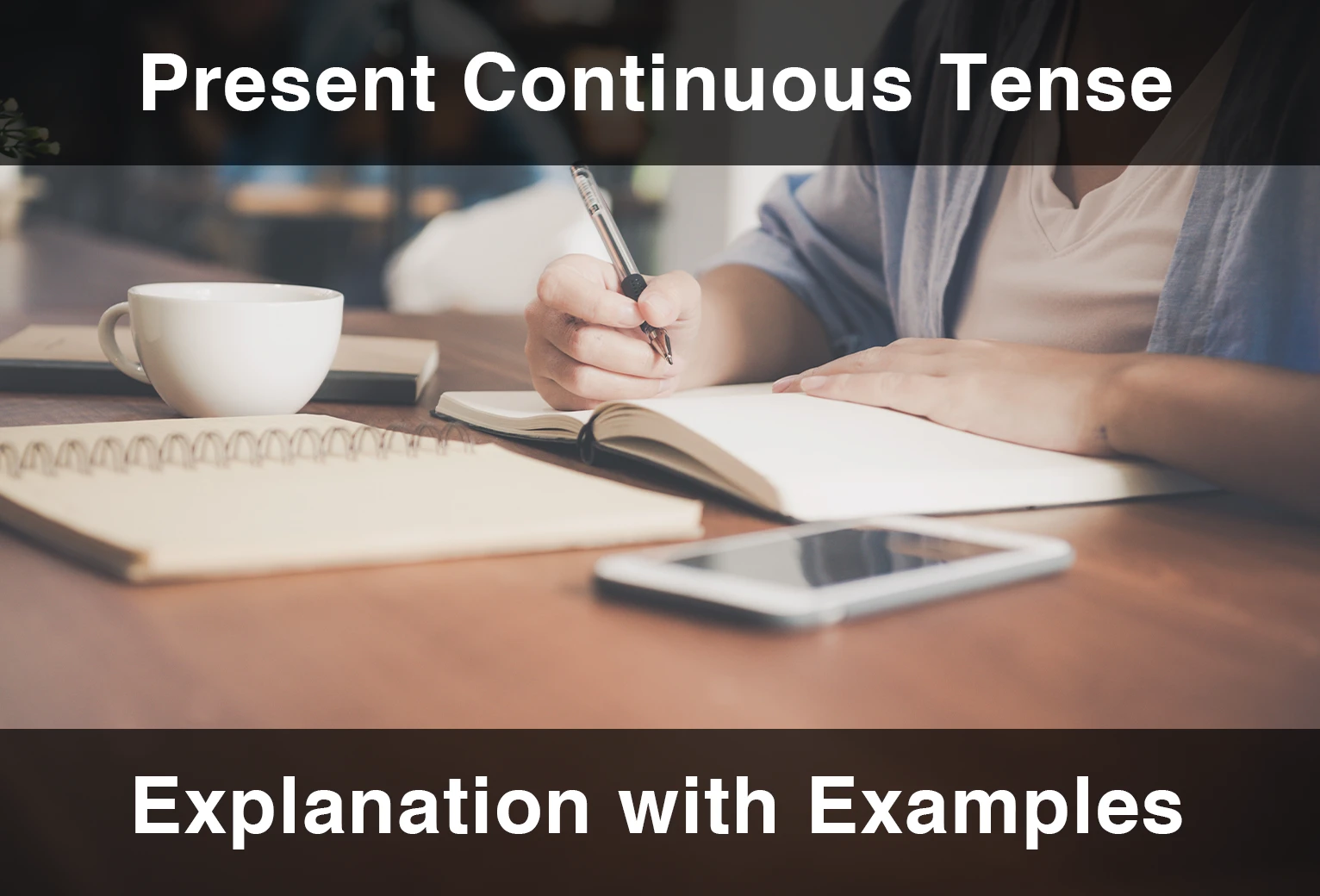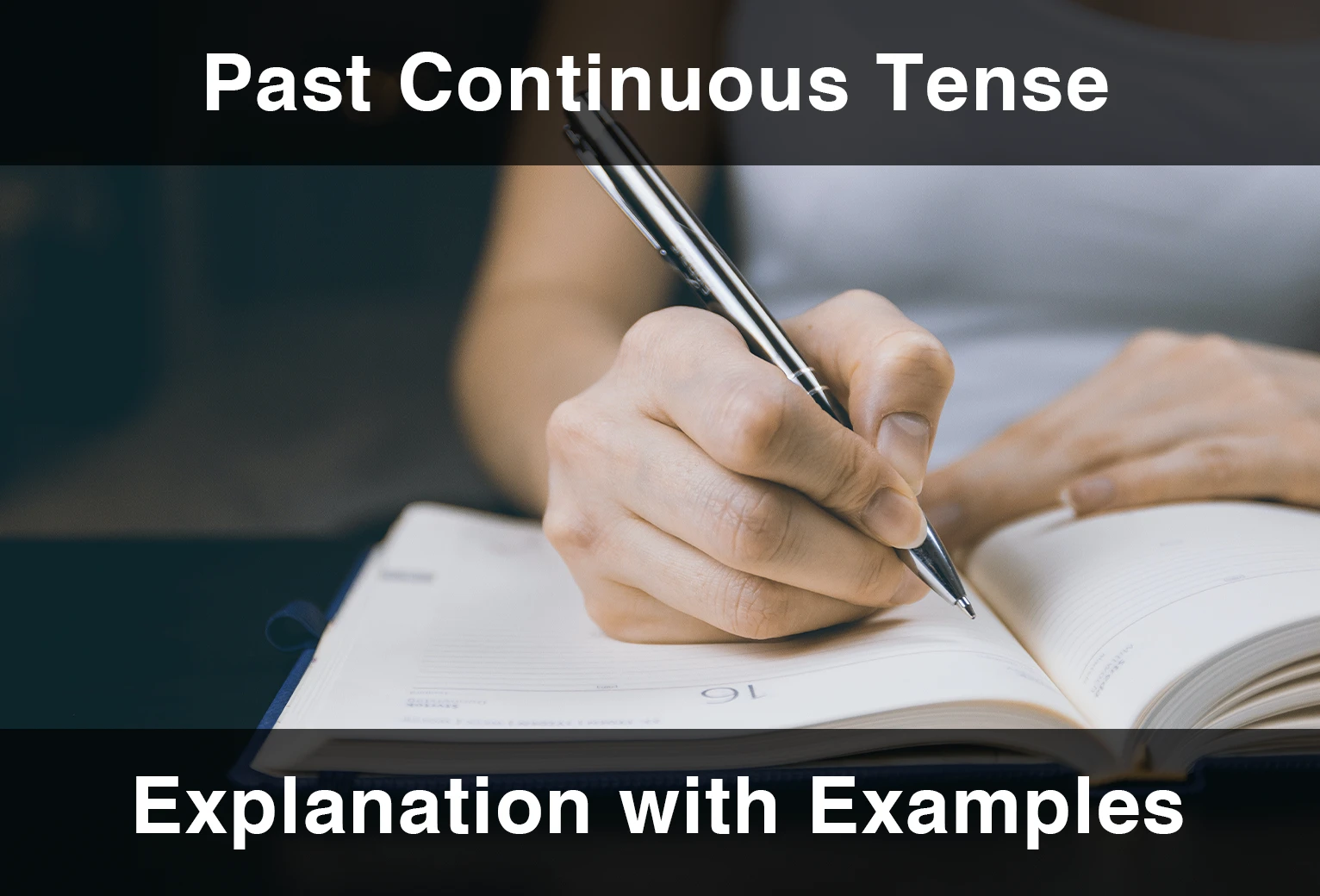Verbs are words that are used with a subject to say what something/someone does or what happens to them, or simply to inform the observer about their state of being. These verbs can be used with various tenses depending on the time that the action happens. The simple past tense is one of these tenses which is used to refer to actions that are completed in a period of time before the present. If you are aiming to succeed at learning English, improving your knowledge about tenses will help you significantly. We have prepared a short guide for you to learn about Simple Past Tense, which will ultimately advance your gramatical sufficiency.
What is the Simple Past Tense?
The simple past tense is used to refer to actions or states that had taken place in the past and ended in a specific time period before the present time. For example, the sentence “Tom played basketball” says that Tom started and finished playing basketball sometime in the past. He isn’t playing basketball right now. Remember, the simple past tense only refers to events that completely finished in the past so if the event is still continuing in the present we can’t write it in simple past tense.
What are the Simple Past Tense grammar rules?
Simple past tense can be used to create positive and negative sentences or a question sentence (interrogative sentence).
Forming the Simple Past Tense:
To form the Simple Past Tense, we generally use the base form (infinitive) of the verb and add the suffix “-ed” to regular verbs.
For example: Regular verb (to walk): I walked to the park yesterday.
However, it’s important to note that irregular verbs have their own unique forms.
Some examples include: Irregular verb (to go): They went on a vacation last summer.
Forming Negative Sentences:
To form negative sentences in the Simple Past Tense, we use the auxiliary verb “did” and “not”, followed by the base form of the main verb without the suffix “-ed.”
For example: I did not watch TV last night.
Yes/No Questions:
When forming yes/no questions in the Simple Past Tense, we also use the auxiliary verb “did” at the beginning of the sentence. The main verb remains in its base form.
For example: Did you go to the party?
Wh- Questions:
Wh- questions in the Simple Past Tense follow a similar pattern. We use the appropriate wh- question word (who, what, where, when, why, etc.) at the beginning of the sentence, followed by the auxiliary verb “did” and the base form of the main verb.
For example: What did you eat for breakfast?
Was / Were Sentences:
When it comes to describing singular and plural subjects in the past, the auxiliary verbs “was” and “were” play a significant role. When referring to a singular subject (he, she, it, or a specific noun), we use the auxiliary verb “was” in the Simple Past Tense. It’s important to note that “was” is used with third-person singular subjects and singular nouns.
For example: She was at the party last night.
When referring to plural subjects (they, we, you, or multiple nouns), we use the auxiliary verb “were” in the Simple Past Tense.
For example: They were happy with the results.
For negative sentences, the contractions for “was” and “were” are “wasn’t” and “weren’t”, respectively.
Simple Past Tense grammar rules table:
Positive Sentences:
| Subject | Verb | Object |
|---|---|---|
| I | Verb 2 | Object |
| You | Verb 2 | Object |
| We | Verb 2 | Object |
| They | Verb 2 | Object |
| He | Verb 2 | Object |
| She | Verb 2 | Object |
| It | Verb 2 | Object |
When forming a sentence with simple past tense, we use was and were as the auxiliary verbs which are the second forms of “to be”. Was as an auxiliary verb is used when the subject pronoun is singular.
Singular Pronouns:
| I He She It | Was |
Were as an auxiliary verb is used when the subject pronoun is plural. “You” is an exception, sentences that are formed with the pronoun “you” always get “were” as the auxiliary verb regardless of the singular or plural meaning.
Plural Pronouns:
| You We They | Were |
What is the Past Tense suffix in English?
For most regular verbs, adding the suffix “-ed” to the base form creates the past tense. For example:
Walk (base form) -> Walked (past tense)
Talk (base form) -> Talked (past tense)
Play (base form) -> Played (past tense)
Verbs ending in a silent “e” drop the “e” before adding “-ed,” as in “love” to “loved”.
For example:
Love (base form) -> Loved (past tense)
Bake (base form) -> Baked (past tense)
Smile (base form) -> Smiled (past tense)
Verbs ending in a consonant preceded by a single vowel often double the final consonant before attaching “-ed”.
For example:
Chat (base form) -> Chatted (past tense)
Stop (base form) -> Stopped (past tense)
Verbs ending in “-y” require special attention when forming the past tense. If the verb is preceded by a consonant, the “y” changes to “i” before adding “-ed.” For example, “study” becomes “studied”.
For example:
Cry (base form) -> Cried (past tense)
Carry (base form) -> Carried (past tense)
Irregular verbs do not adhere to the standard “-ed” or “-d” suffix for the past tense formation. Instead, they have unique, often unpredictable, forms.
For example:
Go (base form) -> Went (past tense)
Have (base form) -> Had (past tense)
Eat (base form) -> Ate (past tense)
Structuring Sentences with Simple Past Tense
There are various ways to form a sentence in simple past tense.
To structure sentences with the simple past tense, we need to follow this simple formula: Subject + past form of the verb (V2) + rest of the sentence (object).
For a simple example: I (Subject) + played (V2) + baseball yesterday. (the rest of the sentence)
When we use an auxiliary verb, the formula goes like this: Subject + auxiliary verb (was/were) + the rest of the sentence (object).
For a simple example: I (subject) + was (auxiliary verb) + at home yesterday. (object).
Simple Past Tense Positive Sentence Examples:
When writing a sentence in past tense, Remember, we use the second form of the verb (V2) after the subject. Remember, to structure a sentence with Simple Past Tense, we follow this simple formula: Subject + V2 + Object.
For a simple example: I (subject) + went (V2) + to school yesterday (the rest of the sentence).
Positive Sentences:
| Subject | Verb | Object |
|---|---|---|
| I | Verb 2 | Object |
| You | Verb 2 | Object |
| We | Verb 2 | Object |
| They | Verb 2 | Object |
| He | Verb 2 | Object |
| She | Verb 2 | Object |
| It | Verb 2 | Object |
When forming a was/were sentence, we use was and were as the auxiliary verbs, which are the second forms of “to be”. Was as an auxiliary verb is used when the subject pronoun is singular. Were as an auxiliary verb is used when the subject pronoun is plural. “You” is an exception, sentences that are formed with the pronoun “you” always get “were” as the auxiliary verb regardless of the singular or plural meaning. To structure a sentence with the auxiliary verbs was/were, we follow this simple formula: Subject + Was/Were + Object.
For a simple example: I (Subject)+ was (auxiliary verb) + at home yesterday (object).
Was/Were Positive Sentences:
| Subject | Auxiliary Verb | Object |
|---|---|---|
| I | Was/Were | Object |
| You | Was/Were | Object |
| We | Was/Were | Object |
| They | Was/Were | Object |
| He | Was/Were | Object |
| She | Was/Were | Object |
| It | Was/Were | Object |
Here are some examples of positive sentences in the simple past tense:
I went to the zoo yesterday.
We watched a movie together.
He bought an umbrella.
They ran in a marathon last week.
The family united after a long time.
I was sick last weekend.
He was my hero.
They were happy after the event.
You were always clumsy.
She was with her cousins last night.
Simple Past Tense Negative Sentence Examples:
When writing a negative sentence in past tense, we use didn’t as the auxiliary verb and the first form of the verbs after it. To structure negative sentences with the simple past tense, we need to follow this simple formula: Subject + did + not + Base form (V1) + object.
For a simple example: I (Subject) + did + not + go (V1) + to school last week. (Object)
Negative Sentences:
| Subject | Auxiliary Verb | Verb | Complement |
|---|---|---|---|
| I | Did not (didn’t) | Nominative Verb (V1) | Object |
| You | Did not (didn’t) | Nominative Verb (V1) | Object |
| We | Did not (didn’t) | Nominative Verb (V1) | Object |
| They | Did not (didn’t) | Nominative Verb (V1) | Object |
| He | Did not (didn’t) | Nominative Verb (V1) | Object |
| She | Did not (didn’t) | Nominative Verb (V1) | Object |
| It | Did not (didn’t) | Nominative Verb (V1) | Object |
When forming a negative sentence with the auxiliary verbs was/were, we need to follow this simple formula: Subject + was/were + not + object.
For a simple example: I (Subject) + was (auxiliary verb) + not (negative adverb) + ready (object).
Was/were Negative Sentences:
| Subject | Auxiliary Verb | Negative Adverb | Complement |
|---|---|---|---|
| I | Was/Were | Not | Object |
| You | Was/Were | Not | Object |
| We | Was/Were | Not | Object |
| They | Was/Were | Not | Object |
| He | Was/Were | Not | Object |
| She | Was/Were | Not | Object |
| It | Was/Were | Not | Object |
Here are some examples of negative sentences in the simple past tense:
I didn’t go to school yesterday.
She wasn’t at the gym today.
They didn’t want to share their food.
You didn’t tell us the whole story.
We were not ready.
She didn’t work for them.
I didn’t leave the library last monday.
They didn’t ask for our permission.
You were not there.
I didn’t wash any dishes.
Simple Past Tense Interrogative Sentence Examples
When writing an interrogative sentence in simple past tense, the auxiliary verb “did” comes first, after that the subject is used and the nominative verb (V1) comes right after the subject. To structure negative sentences with the simple past tense, we need to follow this simple formula:
Did + Subject + Base form (V1) + Object + ?
For example: Did + you (subject) + eat (V1) + dinner last night (object) + ?
Interrogative Sentences:
| Auxiliary Verb | Subject | Verb | Complement |
|---|---|---|---|
| Did | I | Nominative Verb (V1) | Object |
| Did | You | Nominative Verb (V1) | Object |
| Did | We | Nominative Verb (V1) | Object |
| Did | They | Nominative Verb (V1) | Object |
| Did | He | Nominative Verb (V1) | Object |
| Did | She | Nominative Verb (V1) | Object |
| Did | It | Nominative Verb (V1) | Object |
Simple Past Tense Negative-Interrogative Sentence Examples
When writing an interrogative sentence in simple past tense, the auxiliary verb “did” comes first, after that the subject is used and the nominative verb (V1) comes right after the subject. To form the sentence as negative-interrogative, we add “not” in between the auxiliary verb “did” and the subject of the sentence.To structure negative sentences with the simple past tense, we need to follow this simple formula: Did + Not + Subject + Base form (V1) + Object + ?
For example: Did (auxiliary verb) + Not (negative adverb) + I (subject) + call you (object).
Negative-Interrogative Sentences:
| Auxiliary Verb | Negative Adverb | Subject | Verb | Complement |
|---|---|---|---|---|
| Did | Not | I | Nominative Verb (V1) | Object |
| Did | Not | You | Nominative Verb (V1) | Object |
| Did | Not | We | Nominative Verb (V1) | Object |
| Did | Not | They | Nominative Verb (V1) | Object |
| Did | Not | He | Nominative Verb (V1) | Object |
| Did | Not | She | Nominative Verb (V1) | Object |
| Did | Not | It | Nominative Verb (V1) | Object |
Here are some examples of interrogative sentences in the simple past tense:
Did you go to school this morning ?
Did I see you before ?
Didn’t you let them play ?
Didn’t they run three miles last week ?
Did you score a goal last match ?
Didn’t we turn off the lights before leaving ?
Did he really say that ?
Didn’t you just call him for the exam ?
Did they like your poem that day?
Short answers with “did” and “didn’t”:
Positive answers:
| Confirmation word | Subject | Did |
|---|---|---|
| Yes, | I | Did |
| Yes, | You | Did |
| Yes, | We | Did |
| Yes, | They | Did |
| Yes, | He | Did |
| Yes, | She | Did |
| Yes, | It | Did |
Negative answers:
| Denial word | Subject | Did |
|---|---|---|
| No, | I | Did not (Didn’t) |
| No, | You | Did not (Didn’t) |
| No, | We | Did not (Didn’t) |
| No, | They | Did not (Didn’t) |
| No, | He | Did not (Didn’t) |
| No, | She | Did not (Didn’t) |
| No, | It | Did not (Didn’t) |
When writing an interrogative sentence with the auxiliary verbs was/were, we place was and were at the beginning of the sentence before the object. To structure an interrogative sentence with the auxiliary verbs we need to follow this simple formula: Was/were + Subject + Object + ?
For a simple example: Was (auxiliary verb) + the movie (subject) + nice (object) ?
Was/were Interrogative Sentences:
| Auxiliary Verb | Subject | Complement |
|---|---|---|
| Was | I | Object |
| Was | He | Object |
| Was | She | Object |
| Was | It | Object |
| Were | You | Object |
| Were | We | Object |
| Were | They | Object |
Here are some examples of interrogative sentences in the simple past tense that are formed with was/were:
Was she at the theater last day ?
Was the movie interesting ?
Was I ready that day ?
Was she far from here ?
Was the book boring ?
Were they your teachers ?
Were you at the park yesterday ?
Were you out last Sunday ?
Were we blind that time ?
Were you at home yesterday ?
Wh- questions in Simple Past Tense:
We can form questions about the past by starting with one of the Wh- (Who, Whose, Which, Where, What, Why, When, How) question words. To structure Wh-question sentences with the simple past tense, we need to follow this simple formula:
Wh-question + did + subject + verb + adverb of time + ?
For example: Who (Wh- question) + did (v1) + you (Subject) + call (V1) yesterday (Adverb of time) ?
Wh- question sentences:
| Wh- question | Did | Subject | Verb | Adverb of time |
|---|---|---|---|---|
| Who | Did | I | V1 | Yesterday Last Week Three days ago Last weekend etc. |
| Whose | Did | You | V1 | Yesterday Last Week Three days ago Last weekend etc. |
| Which | Did | We | V1 | Yesterday Last Week Three days ago Last weekend etc. |
| Where | Did | They | V1 | Yesterday Last Week Three days ago Last weekend etc. |
| What | Did | He | V1 | Yesterday Last Week Three days ago Last weekend etc. |
| Why | Did | She | V1 | Yesterday Last Week Three days ago Last weekend etc. |
| When | Did | It | V1 | Yesterday Last Week Three days ago Last weekend etc. |
| How | Did | V1 | Yesterday Last Week Three days ago Last weekend etc. |
Here are some examples of Wh- question sentences in the simple past tense:
Where did you go last week ?
Who did you call yesterday ?
When did you arrive ?
Who did she chose ?
Why did he cry ?
What did you learn last semester ?
How did you do that ?
Whose bill did you pay that day?
Which one did you choose ?
How did you pass the exam three days ago?
The Adverbs of Time That Are Used in Simple Past Tense:
Adverbs of time state the period of time that the action of the sentence occurs. Since the Simple Past Tense sentences are taking place in the past, the adverbs must state a past time-line. The adverbs of time that are often used are:
Last year,
Three days ago,
Yesterday,
Last weekend,
In 2009,
2 weeks ago,
Last Christmas,
A long time ago,
5 months ago etc.
Here are some example sentences that are formed with adverbs of time:
I played basketball yesterday.
She was at the library 3 days ago.
I received a gift from Santa last christmas.
We won the cup last year.
They said it this morning.
Frequently Asked Questions About Present Continuous Tense
What are other English tenses similar to The Simple Past Tense?
The tenses that are similar to Simple Past Tense are the Past Continuous Tense, Past Perfect Tense and The Past Perfect Continuous Tense.
What is the Difference Between Simple Past Tense and Simple Present Continuous Tense?
The simple present continuous tense is used to talk about things that are happening at that moment.
What is the Difference Between Simple Past Tense and Present Perfect Tense?
The present perfect tense is used to talk about the things that are started in the past period of time and still continue today.
What is the Difference Between Simple Past Tense and Past Perfect Tense?
The Past Perfect Tense is used to talk about something that happened before another action that happened in the past.
Would you like to put what you have learned into practice? You can access everything you need to learn English on a single platform! With 25-minute one-on-one live English lessons, 40-minute group lessons, more than 30,000 interactive videos, vocabulary learning tools, AI-supported tutor MiMi, quizzes, and interactive activities, EnglishCentral offers its users a personalized and quality education plan at an affordable price. How about registering for EnglishCentral now and starting to learn English?











